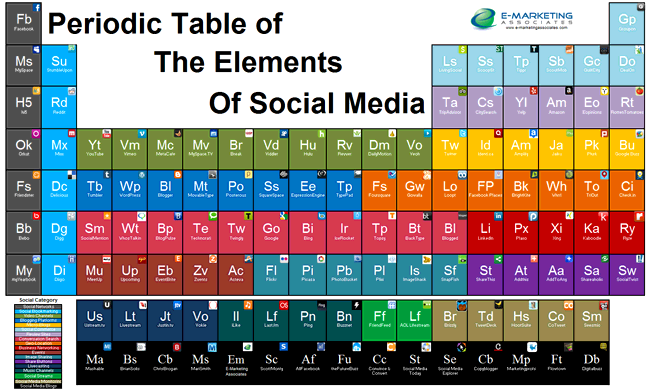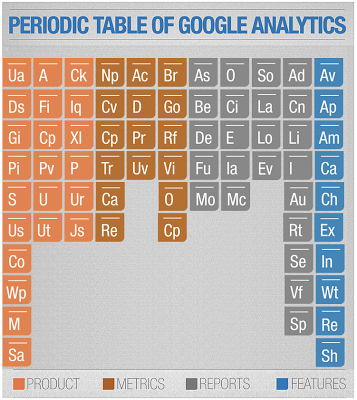 The Periodic Table of Elements, created by Dmitri Mendeleev, is probably the most famous and infographic in history. Since it was published in 1869, the Table of Elements has been a feature of science labs and classrooms in schools all over the world. We’ve grown up with it, but only recently has this infographic taken on a new lease of life.
The Periodic Table of Elements, created by Dmitri Mendeleev, is probably the most famous and infographic in history. Since it was published in 1869, the Table of Elements has been a feature of science labs and classrooms in schools all over the world. We’ve grown up with it, but only recently has this infographic taken on a new lease of life.
The convergence of the world wide web, digital marketing channels and the trend towards graphical representations of information, marketing people have been compiling their own periodic tables of elements.
The most recent famous one of these, and perhaps the best, is the Periodic Table of Content Marketing.
NB: All links in the article open in a new window.
Periodic Table of Content Marketing
Chris Lake (@Lakey) produced this amazing infographic for eConsultancy, where it was first published. He has brought together the main elements of content marketing, looking at content type, placement, shareability etc.
How to use the Periodic Table of Content Marketing
This table is useful even for non marketing people because it helps to organise a checklist, which will help you evaluate the likely success of your content. For example, when planning a content strategy, think about the different formats in which you can publish and re-purpose content.
Think about where it will be shareable – is it easy to share the content; does it contain shareable images or video? Is it emotive, fun, opinionated or informative?
Periodic Table of SEO Success Factors
Search Engine Land produced this informative round-up of SEO factors, which is a good guide for any lay-person. Using this table of elements, which you can view in full here, you can evaluate your website’s likely success in gaining visibility in search results.
How to use this periodic table
The full table includes explanations of each element, so you can see why each item is important. However, SEO success comes from a combination of good factors, so it is the combination of all these elements that will dictate success or failure.
You can also use the table as a checklist when evaluating competitor websites. See if you can work out what they do better than you.
Periodic Table of the Elements of Social Media
E-marketing Associates produced this table, without much rhetoric or explanation, but you can explore the full picture in large format here.
How to use the Periodic Table of Social Media Elements
The table is not like the content marketing or the SEO one, which break down by strategy. This one is more a collection of social media types, such as image sharing, video sharing, conversation etc. Use it as a guide to what’s out there. You may discover some channels you never knew existed.
Periodic Table of Marketing Elements
The B2B Marketing Lab compiled this infographic showing the elements of online marketing, broken down by type.
How to use this infographic
The image above is not the full image. If you view the PDF version here, you will also see the rest of the elements. This is arguably not a comprehensive guide – there are many more influential people than those named here. Check out those people though, and read their expertise.
Periodic Table of Email Marketing
Created by Ricky Warren of Marketing Manager Research Ltd, this table of elements breaks down the key factors involved in an email marketing strategy. View the full table, with explanations, on this PDF.
How to use the Email Marketing table of elements
Ricky has ordered the elements in a succinct and organised way. All email marketers will benefit from a review of each element. Layout of emails is an important factor, but so is the method of broadcast, timing of broadcast, managing subscribers and monitoring open and click rates.
Periodic Table of Google Analytics (GA)
Google has got in on the action too, with this simplification of the main elements of its Analytics service.
How to use the Periodic Table of GA
Published and explained on the official GA blog, the parts of GA are broken down into four main types. The best way to use this is to look at the interactive version on Jeffalytics – where you can mouse over each element and learn more about each of GA’s features and benefits.





